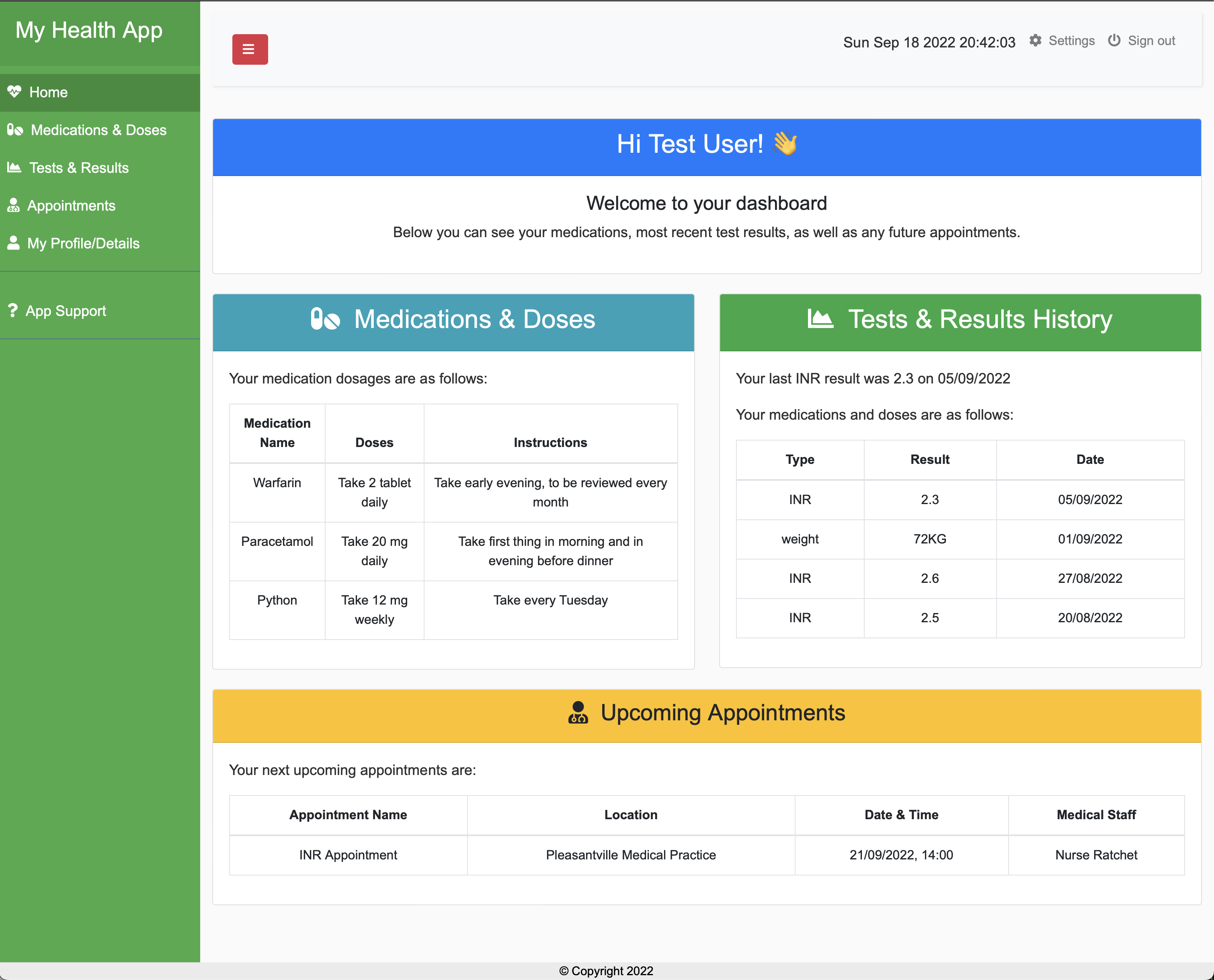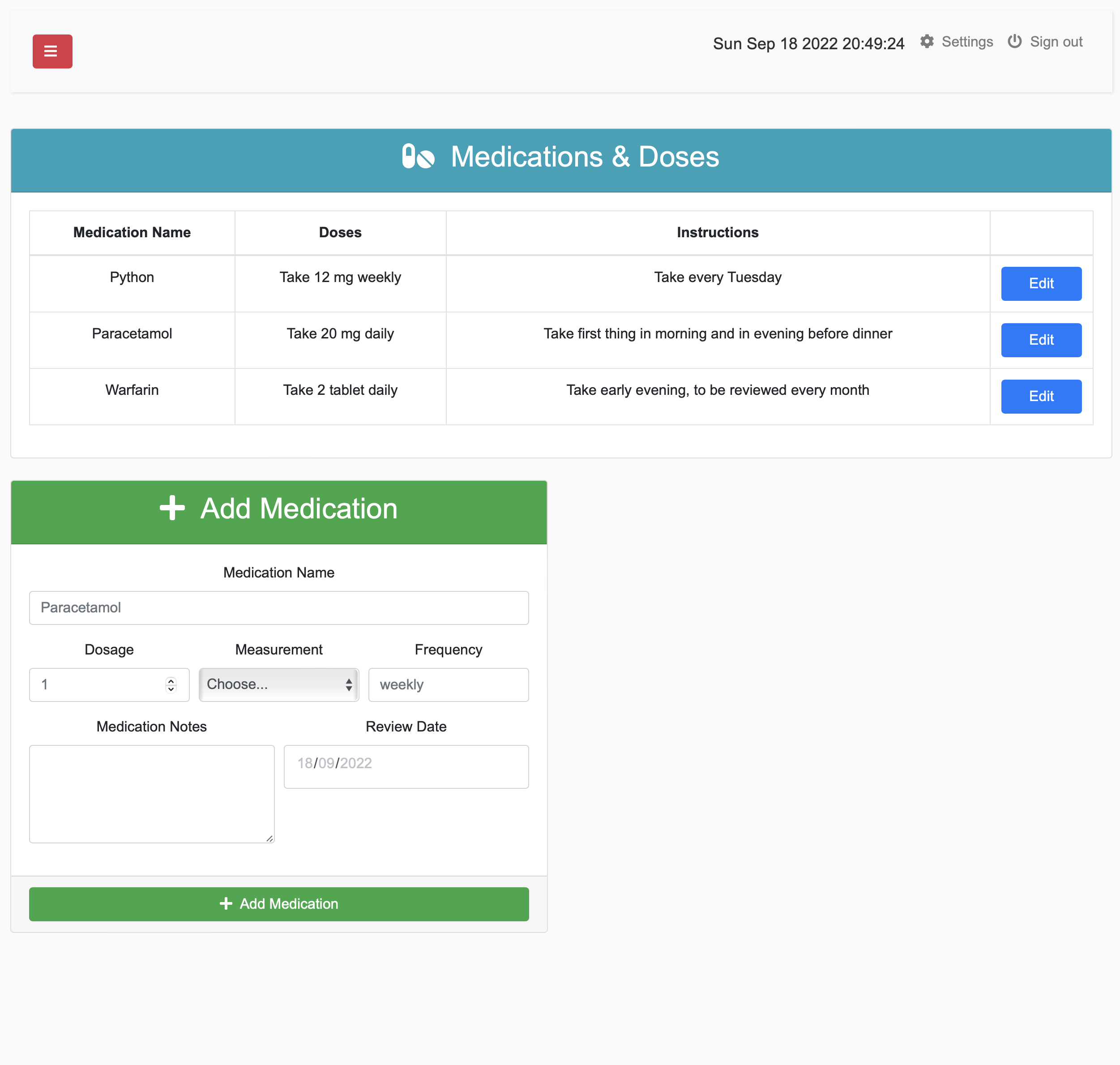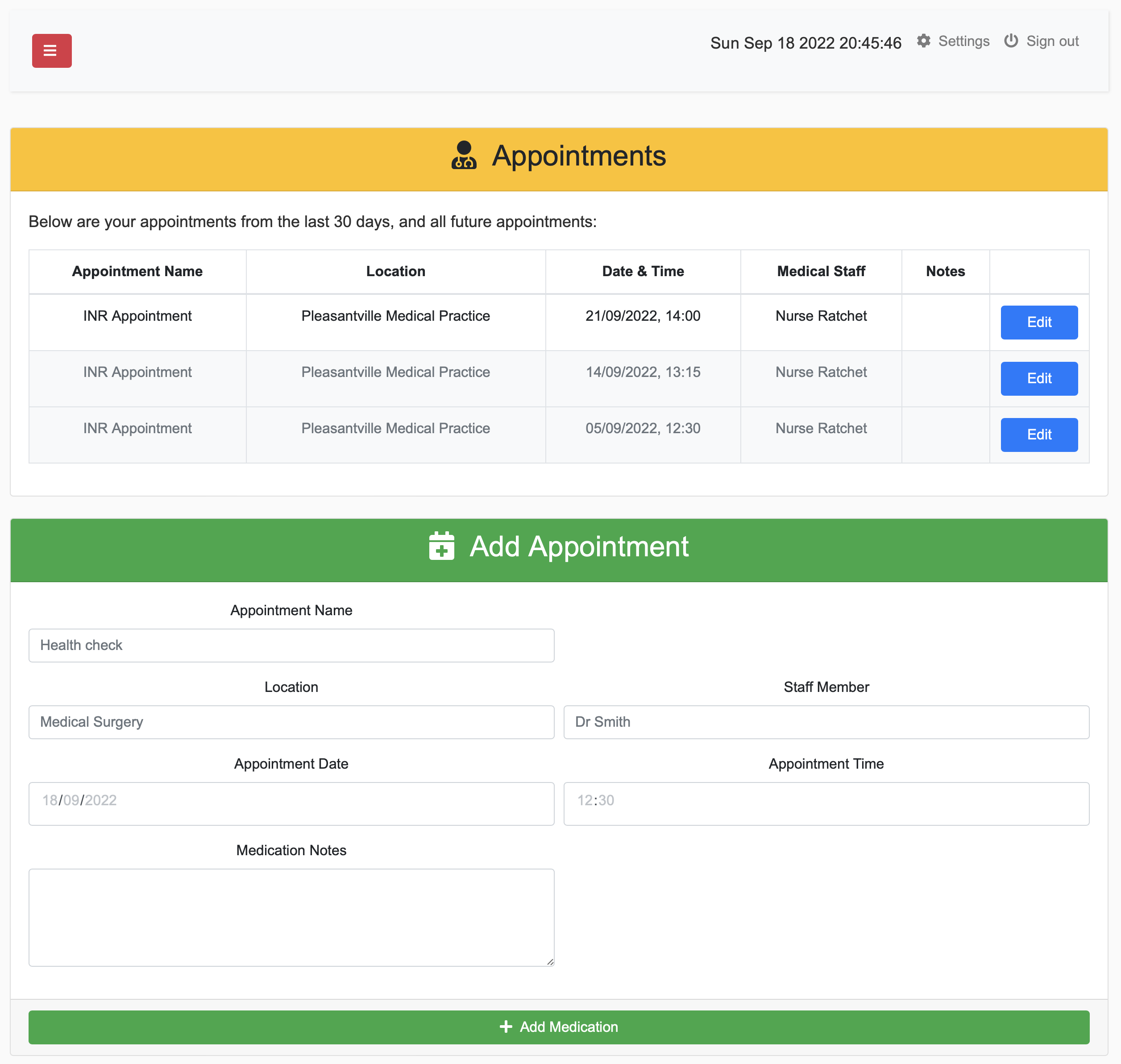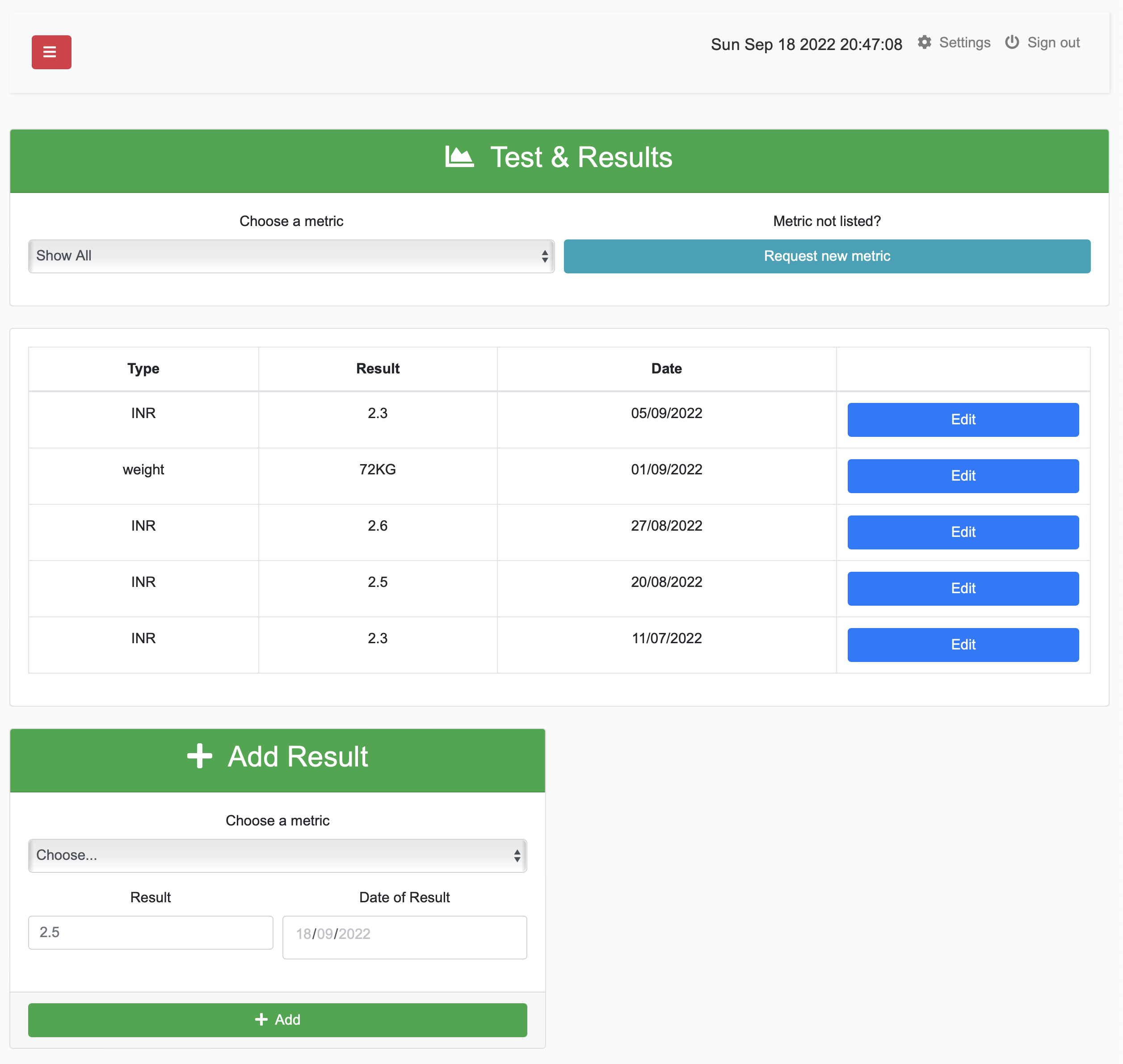Projects
Developing a Healthcare Dashboard for Community Based Patients and their Health & Care Supporters
This is a project I developed for my final module of my BSc Computing and IT degree with the Open University.

Project Overview
Learn more about what the project involved below.
As a carer, managing a patient can be complicated and stressful. Medications vary in dosages day-to-day, be required at different times, and even impacted by test results or appointments. If not carefully managed the consequences to the patient could be severe.
Attempt to build a web application that harmonises multiple healthcare metrics such as medical test results, medical appointments and medications all in one place. Offering the patient access to their data, and the carer the ability to easily record various aspects related to their patient's health.
Solving healthcare issues can help mitigate and ease stress for patients and carers alike, especially for complex healthcare needs. By avoiding errors relating to medication adverse impacts on the patient's health can be avoided. Patient's can also have a propensity to forget to take medications, so this can assist in this area.
Several applications exist for the assorted concepts that would explored for this project, available from both third party developers and also built in to platforms, such as Apple adding medications to their native Health app in 2022.
As an academic project, a diverse range of literature was referenced to complete the project. This included resources from the University itself, as well as numerous books and documentation related to the technologies used within the project.
A basic functioning prototype was produced of the application at the time, which was shown to stakeholders and made use of user experiences and stories to gather feedback.
To avoid reinventing the wheel and due to the limited time available, frameworks such as Bootstrap were utilised to speed up the development and design. This was also developed using a local Apache web server and software called MAMP to utilise the use of PHP in the project. Git was also used and a repository was created to make it easier to manage the overall project. An SQL database was used to store the data needed for the web app.
Investigation with potential users was carried out for the project to ensure that it could provide what users wanted and determine what they would use. Focus groups were used with potential users to discover shortfalls in the UI and UX and to further improve the design and functionality of the web application as the project progressed.
Stakeholders were involved in the testing process by showcasing a prototype of the application, and collecting feedback based on their experience. This allowed me to establish what worked well and what didn't in relation to both the design and the technical functionality used within the application. Automated testing was considered and explored but were not utilised in this project due to time constraints.
As previously mentioned, feedback was gathered through various methods. One of these included a 'Think-aloud Observation' where participants would carry out routine tasks on a prototype and talk through their actions, including how easy they found it to manoeuvre around the application's interface. This helped highlight shortcomings and further feature requests as the project progressed.
As this project took place in a medical sector context the presence of personal, private and sensitive data exists. Therefore strict confidentiality and data protection had to be considered. Additionally, it would need to be medically safe and not pose a risk to users, so careful consideration was required to ensure any data produced and used was safe, such as ensuring correct dosages were presented and that the application had safeguards against providing unsafe and miscalculated data.
Some issues relating to the above topics were important as part of this project, ensuring that the project was developed in a way that language used is gender inclusive was important as gender bias can be an easy trap to fall into. In addition, to ensure the target audience and as many people as possible were considered the appliation needs to comply with Web content Accessbility Guidelines including developing in a way that considers a diverse range of users.
Medications
View Medications
See active medications, as well as dosages and instructions.
Database
Medications are retrieved from a medications table within the SQL database, with records associated to the user.
Manage Existing Medication (Admin only)
Allows carers, healthcare staff or patients who self manage to modify their medication in relation to the dosage or instructions.
Add New Medications (Admin only)
Selected users with sufficient privileges can use a form to add a medication, it's measurement, frequency and when it is due for review.
Appointments
View Appointments
See present and future medical appointments, where and when they are, and who they are with.
Database
Appointments are retrieved from an appointments table within the SQL database, with records associated to the user.
Manage Existing Appointments (Admin only)
Allows carers, healthcare staff or patients who self manage to modify their appointments in relation to details relating to what they are for, the time and date, the location and more.
Add New Appointments (Admin only)
Selected users with sufficient privileges can use a form to add an appointment, providing the location, time and date, location, medical staff the appointment is with and any appointment notes.
Results
View Results
See results for both any medical tests as well as other health metrics, as well as the date of the result.
Database
Results are retrieved from a health_metrics table within the SQL database, with records associated to the user.
Manage Existing Results (Admin only)
Allows carers, healthcare staff or patients who manage their own results to modify dates of results as well as the result itself.
Add New Results & Request New Metrics (Admin only)
Selected users with sufficient privileges can use a form to record new results, as well as request new health metrics not yet added to the system.


